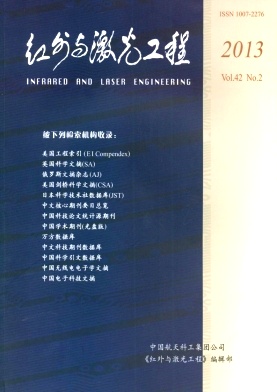|
[1]
|
|
|
[2]
|
Xia Hua, Dong Fengzhong, Tu Guojie, et al. High sensitive detection of carbon monoxide based on novel multi-pass cell[J]. Acta Optica Sinica, 2010, 30(9): 2596-2601. (in Chinese) |
|
[3]
|
夏滑, 董凤忠, 涂郭结, 等. 基于新型长光程多次反射池的CO高灵敏度检测[J]. 光学学报, 2010, 30(9): 2596-2601. |
|
[4]
|
Li'Ang, Xie Pinhua, Liu Wenqing, et al. Monitoring of total emission volume from pollution sources based on passive differential optical absorption spectroscopy[J]. Acta Optica Sinica, 2007, 27(9): 1537-1542. (in Chinese) |
|
[5]
|
|
|
[6]
|
Yang Husheng, Griffiths Peter R, Tate J D. Comparison of partial least squares regression and multi-layer neural networks for quantification of nonlinear systems and application to gas phase Fourier transform infrared spectra[J]. Analytica Chimica Acta, 2003, 489(2): 125-136. |
|
[7]
|
|
|
[8]
|
Devi V Malathy, Benner D Chris, H Smith Mary Ann. Multispectrum analysis of self- and nitrogen-broadening, pressure shifting and line mixing in the v3 parallel band of 12CH3D[J]. Journal of Quantitative Spectroscopy Radiative Transfer, 2002, 73(6): 603-640. |
|
[9]
|
李昂, 谢品华, 刘文清, 等. 被动差分光学吸收光谱法监测污染源排放总量研究[J]. 光学学报, 2007, 27(9): 1537-1542. |
|
[10]
|
David W T Griffith. Synthetic calibration and quantitative analysis of gas-phase FTIR spectra[J]. Applied Spectroscopy, 1996, 50(1): 59-70. |
|
[11]
|
Geng Fan. Application expectation and analyses of optical spectrum recognition technology in infrared guidance[J]. Infrared and Laser Engineering, 2007, 36(5): 602-606. (in Chinese) |
|
[12]
|
|
|
[13]
|
|
|
[14]
|
Zhang Hua, Shi Guangyu. A fast and efficient line-by-line calculation method for atmospheric absorption[J]. Chinese Journal of Atmospheric Sciences, 2000, 24(1): 111-121. (in Chinese) |
|
[15]
|
|
|
[16]
|
Fang Jing, Liu Wenqing, Zhang Tianshu. A line-by-line trace gas absorption model and its application in FTIR gas detection[J]. Infrared, 2007, 28(8): 27-32. (in Chinese) |
|
[17]
|
|
|
[18]
|
Rothman L S, Jacquemart D, Barbe A, et al. The HITRAN 2004 molecular spectroscopic database[J]. Journal of Quantitative Spectroscopy Radiative Transfer, 2005, 96(2): 139-204. |
|
[19]
|
|
|
[20]
|
Nelder J A, Mead R. A simplex method for function minimization[J]. The Computer Journal, 1965, 7(13): 308-313. |
|
[21]
|
|
|
[22]
|
Lin Jieli, Huang Yiqing, Lu Hong. Determination of relative error of pressure-broadening linewidth for the experimentally indistinguishable overlapped spectral lines with Voigt profile[J]. Spectroscopy and Spectral Analysis, 2005, 25(1): 128-132. (in Chinese) |
|
[23]
|
Cheng Siyang, Zhang Tianshu, Gao Minguang, et al. Concentration inversion of high temperature air from FTIR spectra and analyzing residual error structure[J]. Spectroscopy and Spectral Analysis, 2011, 31(1): 82-85. (in Chinese) |
|
[24]
|
|
|
[25]
|
Gamache R R, Kennedy S, Hawkins R, et al. Total internal partition sums for molecules in the terrestrial atmosphere[J]. Journal of Molecular Structure, 2000, 517-518: 407-425. |
|
[26]
|
|
|
[27]
|
|
|
[28]
|
Sun Youwen, Liu Wenqing, Wang Shimei, et al. Non-dispersive infrared multi-component gas analysis system[J]. Infrared and Laser Engineering, 2012, 41(4): 1062-1068. (in Chinese) |
|
[29]
|
Yang Yue, Lei Wuhu. Laser detection of atmospheric composition changed by aerial target tail gas[J]. Infrared and Laser Engineering, 2007, 36: 427-429. |
|
[30]
|
|
|
[31]
|
|
|
[32]
|
|
|
[33]
|
|









 DownLoad:
DownLoad: